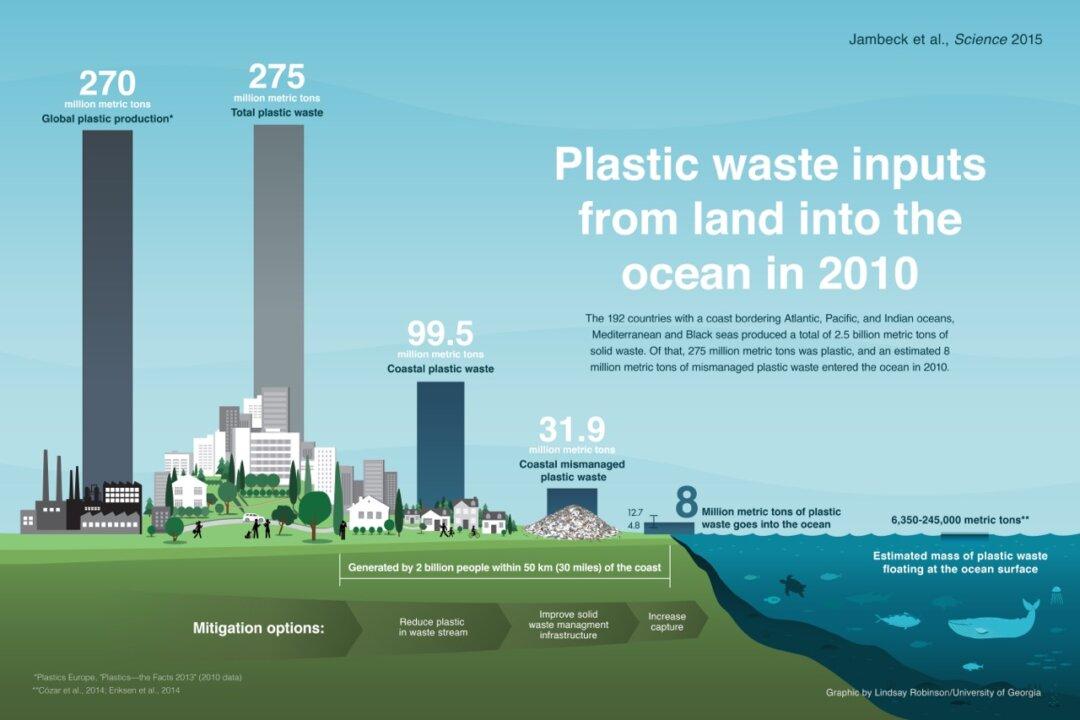Scientists have estimated that between 4.8 and 12.7 million metric tons of plastic entered the ocean in 2010. “Eight million metric tons is the equivalent to finding five grocery bags full of plastic on every foot of coastline,” said lead University of Georgia (UGA) scientist Jenna Jambeck.
The source of most of this plastic comes from people living within 30 miles of the coast. Poorly managed (or open) landfills that allow lightweight plastics to blow away are a major problem. “It fairly quickly emerged that the mismanaged waste and solid waste dispersed was the biggest contributor of all of them,” said Roland Geyer an associate professor who helped UGA conduct this study.
“For the first time, we’re estimating the amount of plastic that enters the oceans in a given year. Nobody has had a good sense of the size of that problem until now,” said study co-author Kara Lavender Law, a research professor at the Massachusetts-based Sea Education Association.




